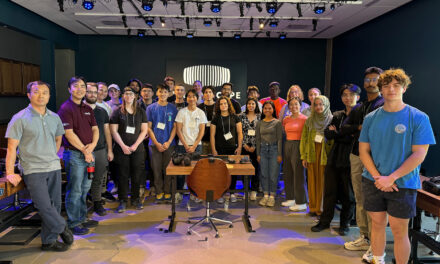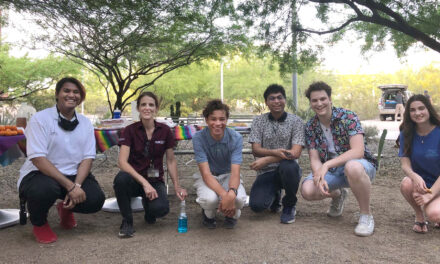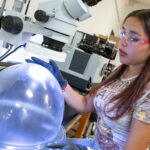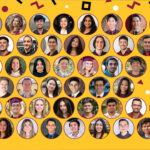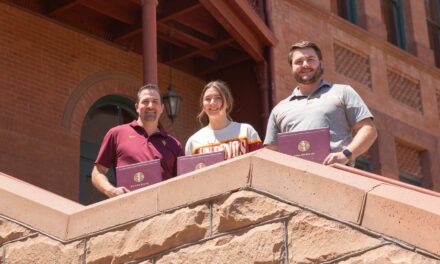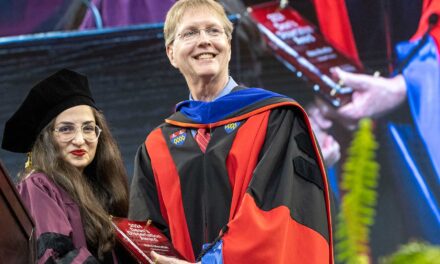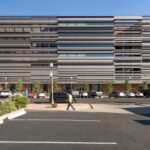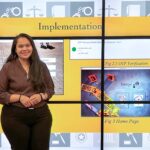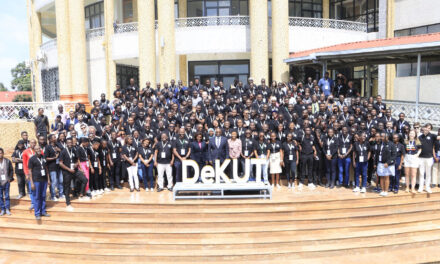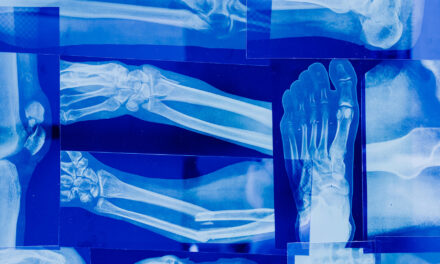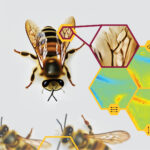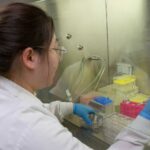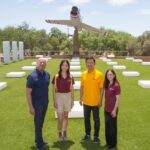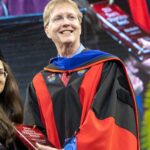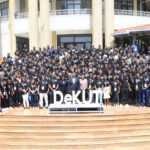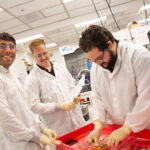
Powered by collaboration
ASU’s Fluid Power Vehicle Challenge team places third at annual competition
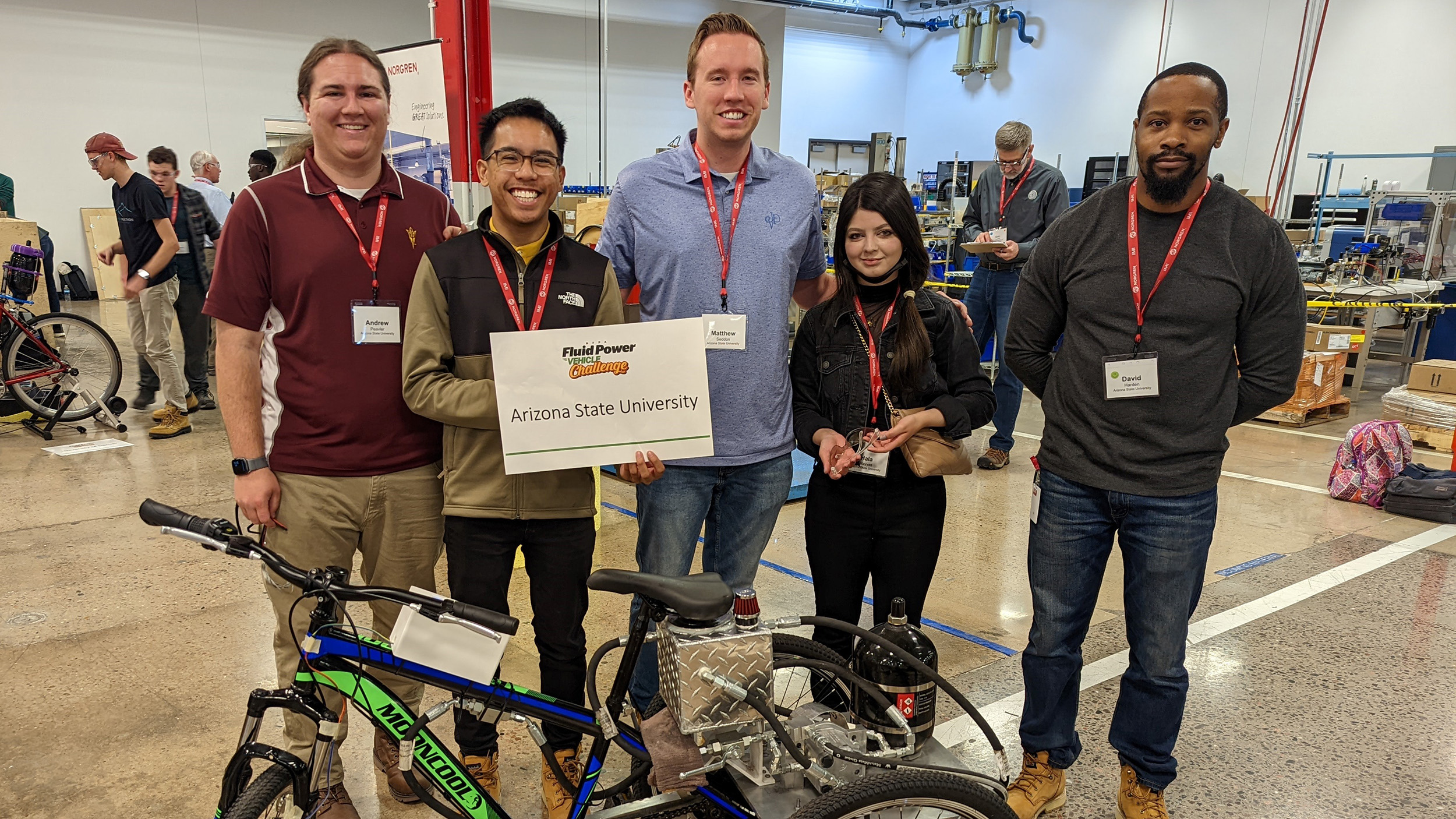
Students swiftly putting the finishing touches on their fluid power vehicles; professors and mentors anxiously watching as teams make their way to the starting line; and judges and industry members looking forward to seeing student creativity and collaboration at its finest.
The scene was lively at the 2021-2022 Fluid Power Vehicle Challenge this past April in Littleton, Colorado.
Arizona State University’s team, based at the Polytechnic campus, was one of 11 collegiate teams that prepared all semester for this moment, and it paid off. They placed third overall for the design of their human-powered tricycle and were also recognized for exemplary performance in the endurance category.
The competition, organized by the National Fluid Power Association, challenged participants with designing a human-powered vehicle that integrated fluid power, or hydraulics and pneumatics — two technology platforms that are not normally associated with one another — offering an opportunity for advancement through innovation.
Wenlong Zhang, an associate professor of engineering at The Polytechnic School, one of the seven Ira A. Fulton Schools of Engineering at ASU, serves as the team’s faculty mentor.
“Placing so highly at this competition seemed like a natural consequence of the team devoting themselves entirely to this process,” says Zhang. “They impressed other universities and industry members with their professionalism, broad skillsets and team mentality. I am very proud of this group.”
A team effort
Fourth-year engineering students in The Polytechnic School have the opportunity to select the capstone project that they will work on during their final semester in the program. Many of the projects are industry sponsored, but the Fluid Power Vehicle Challenge is unique in that it’s a competition project.
Team captain and recent mechanical engineering system program graduate, Matthew Seddon, says this project was his first choice because he “loves building and this was the most hands-on project.”
“From 3D printing and lathe machining, to using the drill press, welding, torquing, screwing all of the nuts and bolts together and then competing, this project was appealing to the whole group,” Seddon says.
Seven other students, who span three of the engineering program concentrations at The Polytechnic School, also joined the team — each bringing a different skill to the tricycle build.
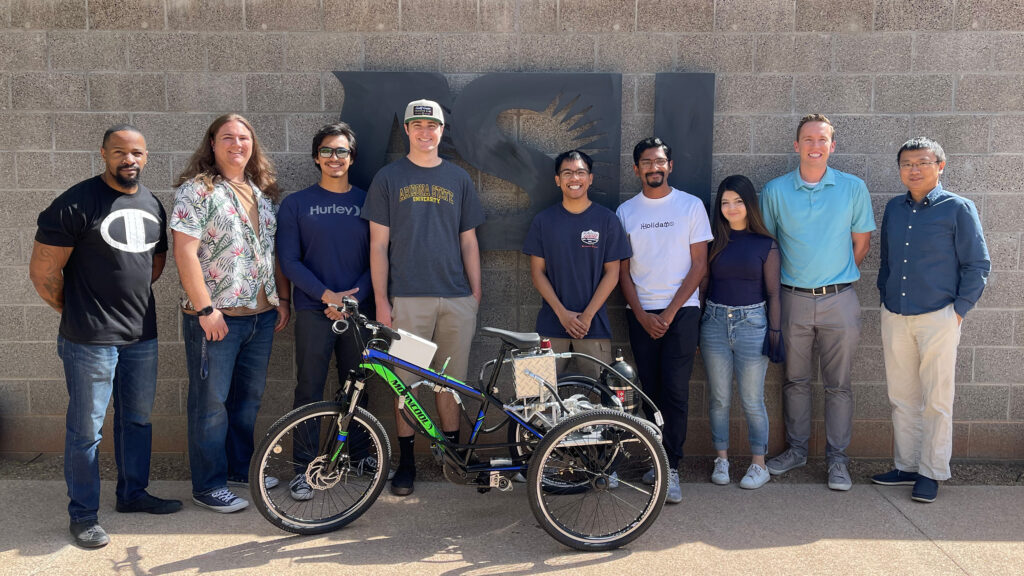
Students of the Fluid Power Vehicle Challenge project pose with their award-winning human-powered trike at ASU’s Polytechnic campus. Pictured, from left to right, automotive systems major David Harden, automotive systems major Andrew Peavler, automotive systems major Jacob Delacruz, mechanical engineering systems major Logan West, electrical systems major Jerred Hermogino, electrical systems major Akhil Johnson, automotive systems major Hala Mayyas, team captain and mechanical engineering systems major Matthew Seddon and Associate Professor and faculty mentor Wenlong Zhang. Photo courtesy of Matthew Seddon
Seddon orchestrated the progress of the build, advocating for everyone’s individual talents and closely monitoring deliverables.
“Matt was a very dedicated leader. He would wait for me outside of my class and quickly take the opportunity to talk to me between classes,” Zhang says.
In addition to Seddon’s leadership, automotive systems student, Andrew Peavler, was the machinist lead, working with computer-aided design, or CAD, SolidWorks software and the computer numerical control, or CNC, machine — guiding other team members along the way.
Logan West, a mechanical engineering systems student, partnered with Peavler, to work on CAD and assembly while keeping the team motivated. Electrical systems engineering students Jerred Hermogino and Akhil Johnson were responsible for configuring the electrical system on the vehicle which included the development of an electrical circuit capable of recording and displaying the vehicle’s speed on an LCD screen.
Automotive systems student David Harden helped with the chains and brakes while Hala Mayyas, who is also an automotive systems student, managed simulation.
“Hala made the simulation at the very beginning to show us our speed, the distance we could go and how much torque we would have, so she could set realistic goals for us to reach,” Seddon says.
Jacob Delacruz, also an automotive systems major, “came through in a big way,” Seddon says, when he welded some tough aluminum during the final phases of the build. He also installed the chain guards and helped with the mounting of the reservoir.
While not officially on the team, Jonathan Bush, a systems engineering doctoral student in Zhang’s lab, the Robotics and Intelligent Systems Laboratory, or RISE Lab, and staff member Rhett Sweeney, a lead machinist and instrument designer at The Polytechnic School, helped set a strong foundation for the team. Bush provided valuable technical suggestions and Sweeney helped the team navigate the software and machinery at the manufacturing facilities on the Polytechnic campus.
Various other faculty, staff and students supported this team on their journey to success. Tim Beatty, business development director for the Fulton Schools, Darryl Morrell, associate professor of engineering and Stevan Hunter, engineering faculty associate, saw immense value in exposing students to the competition experience and helped bring this project to life.
Competition day
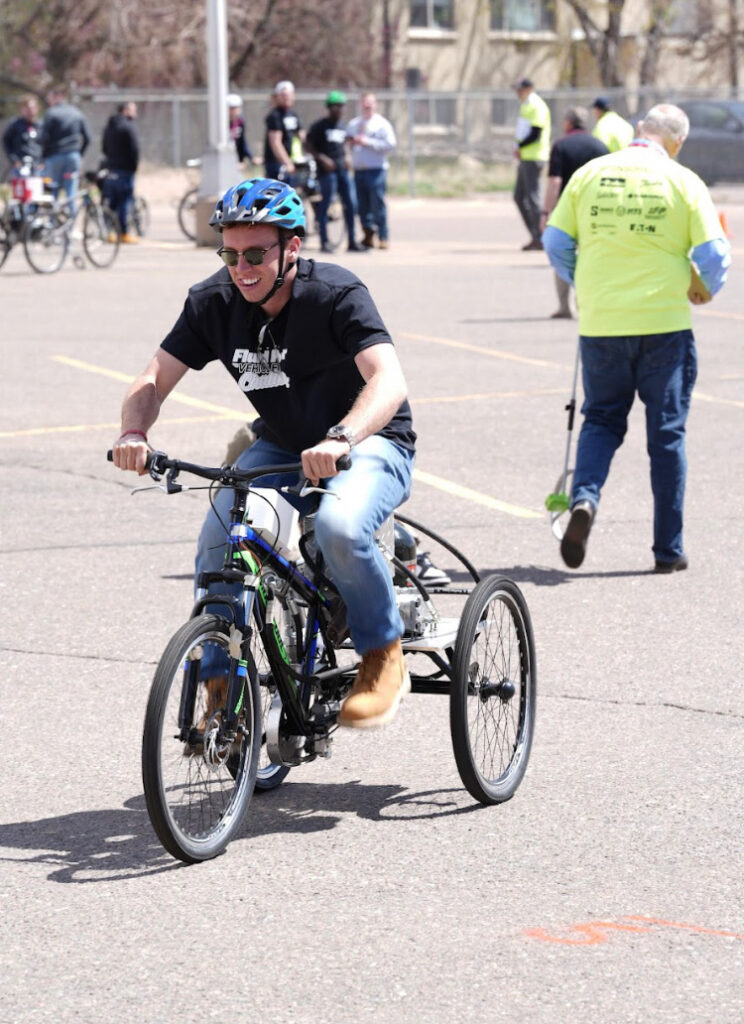
Matthew Seddon, team captain and student in the mechanical engineering systems program, riding a human-powered trike at the Fluid Power Vehicle Challenge competition in Littleton, Colorado in April. Seddon says he remembers the first time he rode the trike. “I flipped up the ball valve and all of a sudden it started moving down the hallway in the SIM building. I drove right by the welding instructor’s classroom and was screaming ‘it’s working!’ After all that calculation, design, machining and finally putting it all together and seeing it work was such an exciting moment!” Photo courtesy of Matthew Seddon
When Zhang arrived at the competition, he said he immediately noticed that students of opposing teams were already making friends with one another.
“That’s the part I liked the most,” Zhang says. “In my mind, we were all winners.”
He says he believes the team represented ASU’s innovative mindset throughout the build and at the competition by making the vehicle lighter, travel longer and run at higher speeds, all while maintaining safety.
“The Polytechnic School students are a perfect fit for this challenge,” Zhang says. “We focus heavily on user-inspired and hands-on training; and to do well in a competition setting, students have to be able to design manufacturing concepts, do mathematical computation, run a simulation, conduct testing and, finally, have a functional product at the end, and our team did just this.”
Among all of the hard work and dedication in various areas of engineering, the team’s ability to do quick and effective onsite debugging led them to success.
“Throughout the process, it was apparent that the team was applying skills and knowledge that they learned during their time at ASU,” Morrell says. “It’s projects like these that are preparing students for careers in engineering.”
The team’s winnings included $1,000 from their third-place win, which was split among the team members, and $1,000 for their endurance recognition, which will partially fund next semester’s team.
Powering into the future
The future of the Fluid Power Vehicle Challenge team at ASU looks bright, as does the future of the students on the team who graduated this past spring.
Seddon will launch his career as a mechanical engineer at aerospace and defense technology company Northrop Grumman, in Chandler, Arizona, and says his experience at ASU prepared him for this role.
“I don’t think there’s anything cooler than being able to call myself a rocket scientist,” Seddon says.
Zhang looks forward to turning the Fluid Power Vehicle Challenge team into a student organization at ASU’s Polytechnic campus. He hopes this will bring in new perspectives and encourage the team to grow and improve.
“Our goal as faculty is to provide a real-world problem for students to get inspired by and this is the perfect example of that,” Zhang says.






